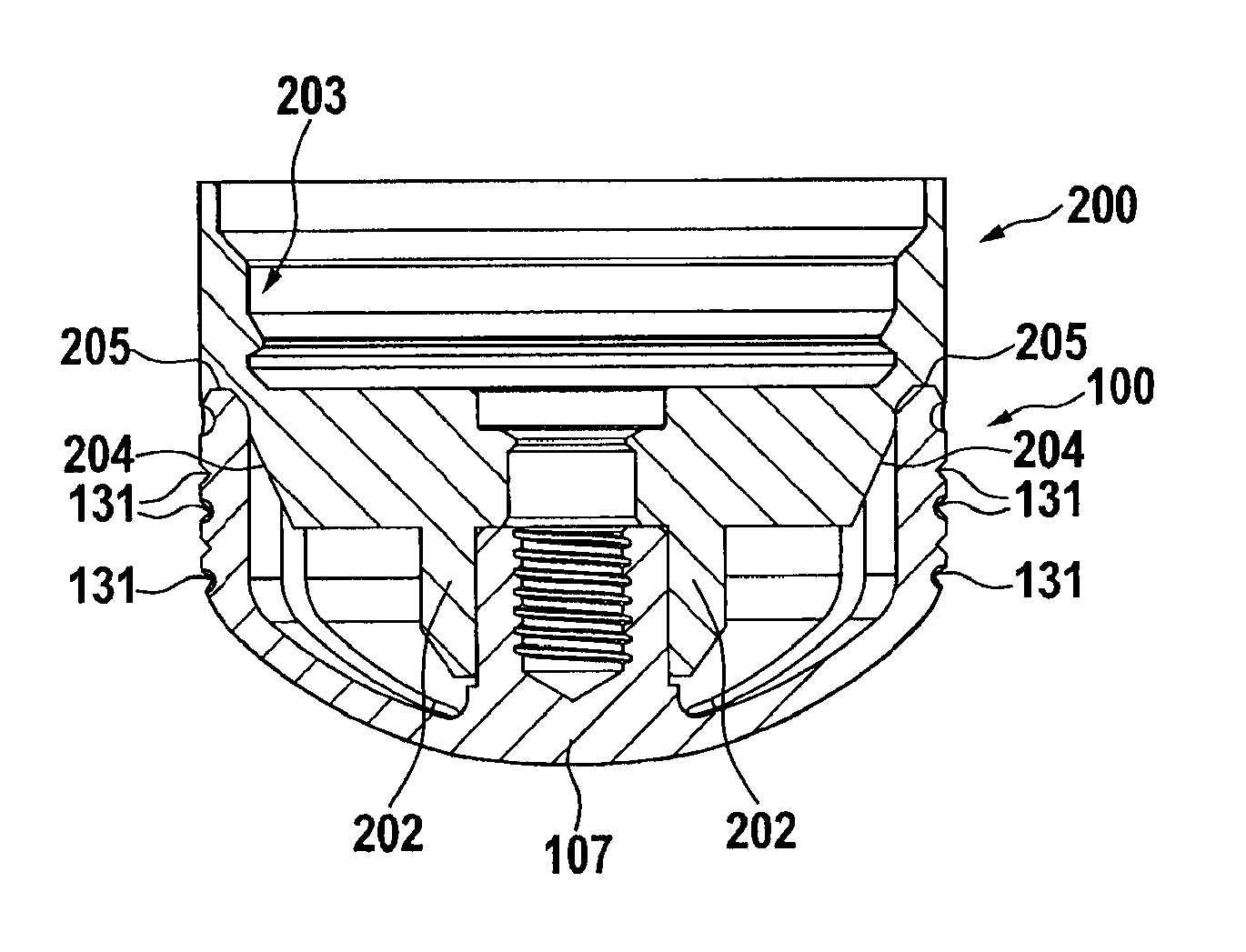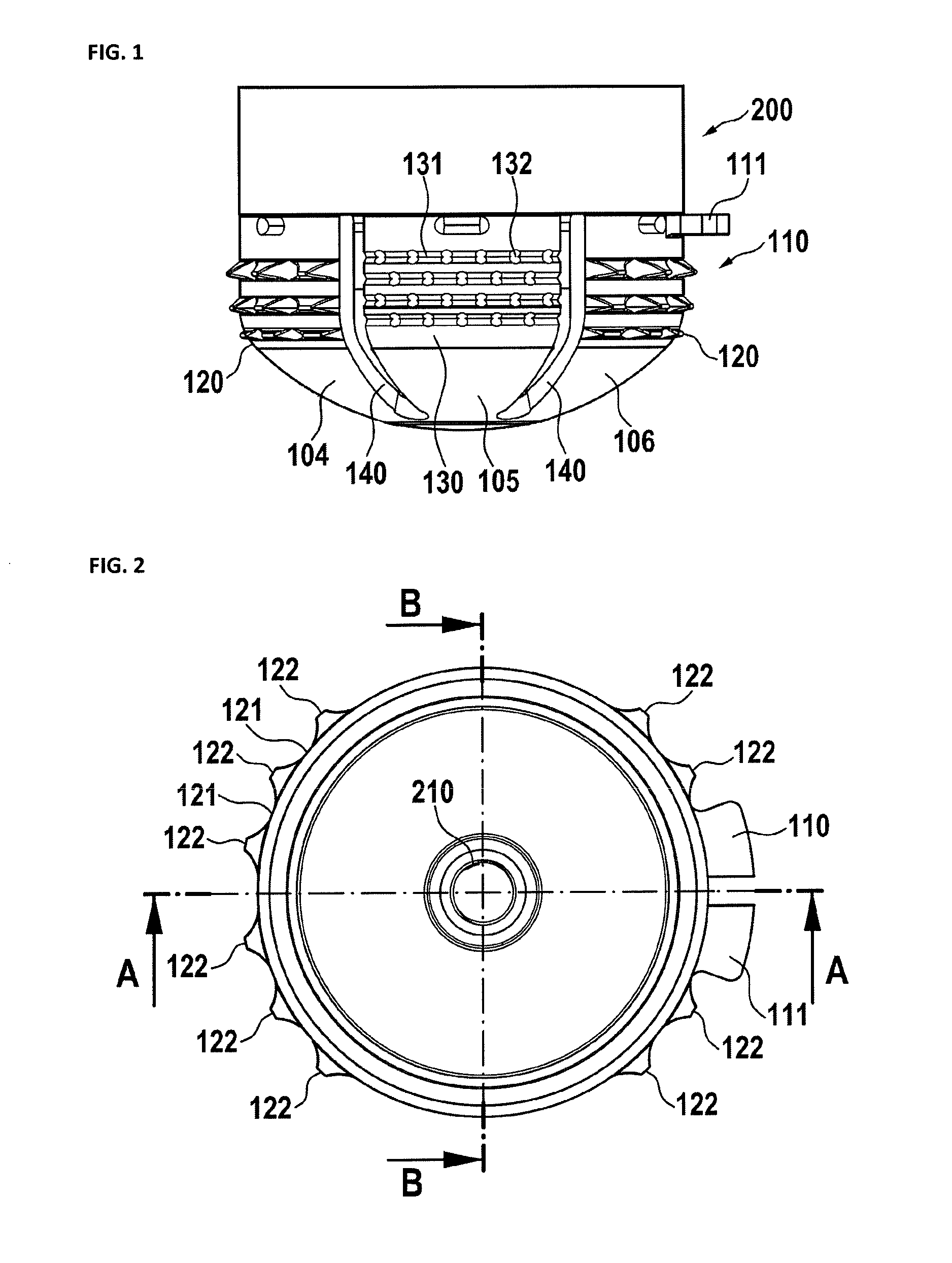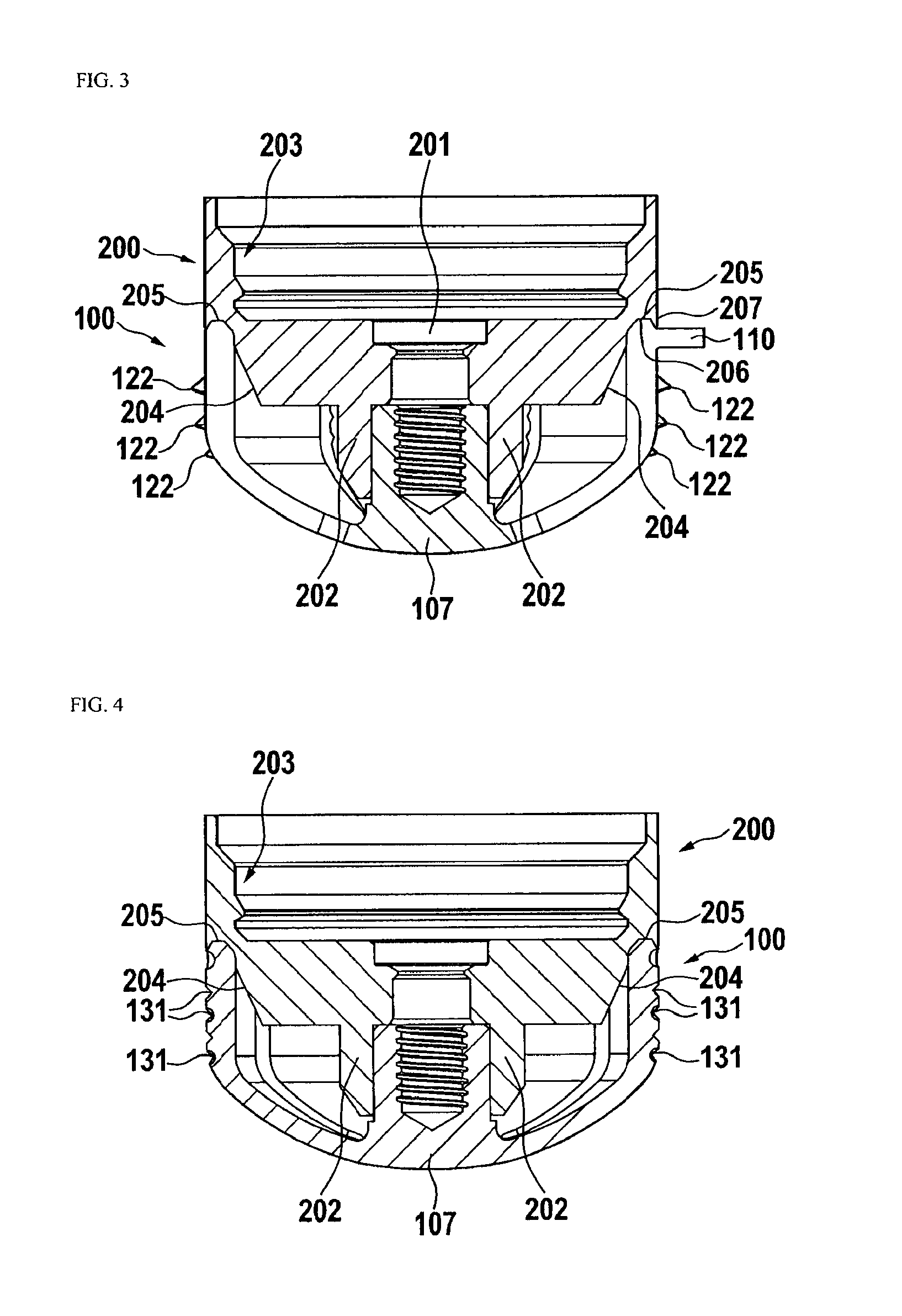Stemless shoulder implant
a stemless, shoulder technology, applied in the field of humerus implants, can solve the problems of implant rotational symmetry and implant misplacement, and achieve the effects of low bone removal, high retention force, and fixed procedur
- Summary
- Abstract
- Description
- Claims
- Application Information
AI Technical Summary
Benefits of technology
Problems solved by technology
Method used
Image
Examples
Embodiment Construction
[0041]FIG. 1 shows an embodiment of a humerus implant in a side view. The implant has a cup shaped body 100, which include of a plurality of sidewall segments. There are first sidewall segments 104, 106, 120 having locking fins 122. These locking fins immediately anchor the cup shaped body within the bone. Due to the radial anchoring in the bone material, the fins cause a comparatively high pull out force of the implant. Further cementing is no more necessary.
[0042]Second sidewalls 130 have recesses 131 and holes 132, which allow ingrowth of the bone. The recesses increase the pull out force of the cup shaped body, while the holes block rotation. Preferably, there are gaps 140 between the sidewall segments, which allow a compression of the sidewall segments during insertion and therefore a reduction of the outer circumference of the cup shaped body. Due to be reduced circumference, the cup shaped body can easily be inserted into a hole of the bone. At least one tab 111 is provided f...
PUM
 Login to View More
Login to View More Abstract
Description
Claims
Application Information
 Login to View More
Login to View More - R&D
- Intellectual Property
- Life Sciences
- Materials
- Tech Scout
- Unparalleled Data Quality
- Higher Quality Content
- 60% Fewer Hallucinations
Browse by: Latest US Patents, China's latest patents, Technical Efficacy Thesaurus, Application Domain, Technology Topic, Popular Technical Reports.
© 2025 PatSnap. All rights reserved.Legal|Privacy policy|Modern Slavery Act Transparency Statement|Sitemap|About US| Contact US: help@patsnap.com



